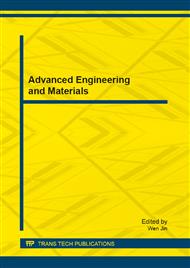p.556
p.561
p.570
p.574
p.578
p.583
p.589
p.595
p.599
A High By-Pass Ratio Turbofan Model Based on CMF Method
Abstract:
In this paper, a detailed research about a high by-pass ratio turbofan engine transient performance model has been carried out, and the relevant solver equations have been deduced by employing constant mass flow (CMF) method. A high by-pass ratio turbofan engine transient model was established by means of employing the solver equations and Matlab programming language. On the basis of comparison, the calculation results of the model have quite remarkable consistency with those results calculated by GSP 11, with maximum error within 3.0%.The simulation results show that the solver equations of aero-engine deduced in this paper are of high validity and applicability.
Info:
Periodical:
Pages:
578-582
Citation:
Online since:
February 2013
Price:
Сopyright:
© 2013 Trans Tech Publications Ltd. All Rights Reserved
Share:
Citation:


